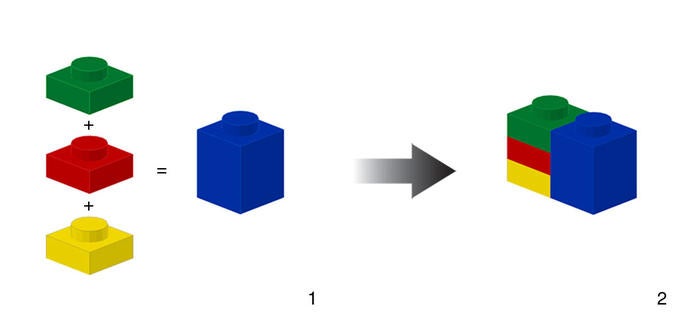Educational technology is in the midst of exciting times, evolving and changing. This column loops you into “edtech” that is already in use at Waterloo, as well as what’s coming down the pipe, and hopefully piques your interest, maybe to suggest a column idea! Our first article broaches one of the most exciting advances that is facilitating positive change in online learning environments (known in current form as Learning Management Systems, or LMS) … standards. Yes, standards!
Wait, don’t run, standards are the lynchpin in what many pundits see as the Next Generation Digital Learning Environments (NGDLEs), a hot topic these days, and where we’ll focus before returning to how standards enable those.
Next Generation Digital Learning Environments (NGDLEs)
In 2015 Educause1, a higher education technology association, released a white paper vision2 for the NGDLE. The term “learning environment” was chosen purposefully, to broaden the discussion beyond the LMS (systems like Waterloo LEARN, running D2L Brightspace), to encompass the variety of online or digital tools that could be used to transform learning. The white paper spawned many responses, including a N2GDLE (Next Next GDLE), but the original five next-gen advances still hold, and we begin by looking at those in the context of Waterloo’s online environment. The areas are Interoperability; Personalization; Analytics, advising, and learning assessment; Collaboration; and, Accessibility and universal design.
Original next-gen advances at Waterloo
Interoperability
The authors drew an analogy to LEGO®3 bricks, where an assortment of online teaching tools are bound together as a seamless tool set to enrich the environment for the instructor and student. 
Waterloo has built out LEARN, adding tools such as Turnitin, iClicker, Piazza, and publisher websites. Students and professors use these directly from LEARN, without logging into each application. Class lists are automatically populated in the added applications, and other data can be shared, such as synching grades from the other tool to the LEARN gradebook. Even while not all “integrations” are perfect, and some add-on tool functionality may not be available within the LMS, this interoperability benefits students and instructors. Related to Analytics below, the environment appears holistic, yet course work is scattered to different applications.
Personalization
Learners arrive at Waterloo with varying educational preparedness. The idea behind personalization is to build learning pathways to accommodate differences, allowing the learner to move along a path most appropriate to them. LEARN provides mechanisms for course builders to set rules and release conditions based on assessing whether the student grasps concepts (e.g., with a quiz) before advancing them in the topic area. Other products, including D2L LeAP, offer further “adaptive learning” options, though there has not yet been significant interest in these at Waterloo.
Analytics, advising, and learning assessment
This large topic is all about data; course data on how students navigate and use content and tools in the learning environment (learning analytics); data about programs students are enrolled in (data for advising); and assessments of students’ work in their course. Though interoperability allows tool expansion, the data is separate, in different formats, and non-trivial to assemble and analyze. Most LMSs offer some analytics tools. Many customers, including Waterloo, are anxious for direct access to the data, to perform our own analyses outside of packaged reports.
Collaboration
Students interact with each other, with their instructors or TAs, and sometimes with external participants in the course (e.g. a guest mentor). They are accustomed to the variety, flexibility, and richness of social media, and tools inside the learning environment can seem restrictive (in many cases necessary for privacy). Live collaboration tools, such as Adobe Connect for virtual classrooms and webinars, are available to courses at Waterloo, and add-on tools, like Piazza, offer interaction options, both “integrated” in ways described under Interoperability.
Accessibility and universal design
Making materials and activities available by design, rather than as an afterthought or retrofit, is critical to an inclusive learning environment. As part of Waterloo’s purchasing and development processes, the provincial AODA standards are adhered to, and if possible, surpassed.
Standards - bringing learning tools together
Waterloo is taking advantage of what’s available to enhance the learning tools. As with the proverbial family road trip, “We’re not there yet” when it comes to NGDLE. However, standards are pivotal to the vision of easily, seamlessly, and richly bringing a variety of edtech tools into one online environment. Look at the example of students submitting assignments to what acts like a normal dropbox in LEARN, but behind the scenes the submission is checked for proper citations and plagiarism in another application, Turnitin. As noted, students don’t sign in to Turnitin, the instructor doesn’t set up their course in Turnitin. A standard called Learning Tools Interoperability (LTI), from IMS Global, allows information such as the course and the user (and their role as student or instructor) to flow between the tool (Turnitin) and LEARN, and allows grades to pass from the tool to LEARN, offering convenience and less administrative overhead. Any LMS that adheres to LTI standards can use this same “integration”, which means vendors write the code once for many LMSs, which benefits customers too.
The LTI standard has limitations in what attributes and information are passed. In some cases Waterloo has paid to have a tighter integration developed (e.g. Maple TA from MapleSoft). Still, the standard is evolving, and greater interoperability between the applications is eagerly anticipated. Another IMS Global standard, OneRoster, aids in delivering student rosters from student data systems to any other system. These both support and enable the interoperability objective of the NGDLE.
Learning data and analytics have great potential for tracking how content and systems are used and thus, how we make changes to improve them. Imagine, as the fully online support team in the Centre for Extended Learning (CEL) does, if you could see the pathways that students take to navigate a course, and learn how much time they spend on what content (e.g. what parts of videos are most often played, or what content is rarely visited), correlated with student performance. Such information would facilitate continuous improvement of course content and structures. This data may offer tremendous opportunity to assess student progress and aid in their success. The IMS standard called Caliper will standardize the format of student activity data, to be stored in a learning record store. Insights can be gained by analyzing the data, and new services such as for predicting student success, intervention, and feedback – related to Personalization and Advising – could be built to make use of the data.

At Waterloo, concepts of tying together “best of breed” tools into a rich environment for learning are not new; they have been part of our wish list and conversation since the early days of investigating learning environments. In the late 1990s and into the early 2000s, Waterloo wrote a front end system to guide instructors using a particular model for moving online4. What was desired was to embed the tools (quizzes, discussions, collaborations) into the topics (content) in a natural way for a module of learning. The most workable solution was to use an LMS (Blackboard) as the backend to UWOnE, because an LMS provided one login and one roster population for a set of learning tools. Sounds familiar! A new competitor on the market, called ANGEL (from Cyberlearning Labs), was very excited about the prospect of “turning their system upside down”; it was adopted in 2004. In 2005, the UWOnE frontend was discontinued, and ANGEL, branded as UW-ACE, was used until 2011 (just after it was sold to Blackboard). The ability to add learning tools to the new system was a very important attribute for our new search, and standards a critical element of that solution.
These steps along the way have all been building towards our Waterloo strategic goal, “Expand the appropriate use of technologies to enhance students' learning experience.”
What's next for edtech at Waterloo
We continue to evolve our learning environment with collaborative planning, involving IST’s Instructional Technologies and Media Services (ITMS), CEL, Centre for Teaching Excellence (CTE), the Library, the Bookstore, the Faculties, and numerous other academic support units. About every two years we hold a retreat to plan for the next 18 months to two year horizon. In June 2016 we used the NGDLE as the focal point for discussions. Our resulting topics of focus were to track the NGDLE, to support making strides in the use of and contributions to Open Educational Resources, to further investigate micro-credentials and badging, and to better understand our collection and use of learning data. This fall and winter we will run surveys of our instructors and students to get feedback on how satisfied they are with our learning environment, what edtech they use beyond what we provide, and ask for their input on directions. These directions and more, from our e-classrooms, live collaboration tools, and media production areas are topics for future articles. If you have a topic you’d like to see covered in this space, I’d love to hear from you!






